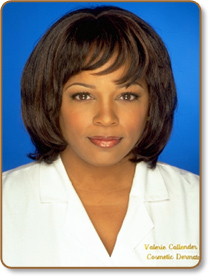 Rosacea, or commonly referred to as “adult acne” is a common skin disorder that affects approximately 14 million Americans. The exact cause of rosacea is unknown; however there are several trigger factors that are associated with rosacea flares. These include hot drinks, spicy foods, caffeine, and alcoholic drinks. Heat and exercise can also worsen rosacea.
Rosacea, or commonly referred to as “adult acne” is a common skin disorder that affects approximately 14 million Americans. The exact cause of rosacea is unknown; however there are several trigger factors that are associated with rosacea flares. These include hot drinks, spicy foods, caffeine, and alcoholic drinks. Heat and exercise can also worsen rosacea.
Rosacea occurs mainly on the central areas of the face which includes the cheeks, forehead, chin and nose. Initially the skin may show a tendency to flush easily and it gradually progresses to persistent redness.
As the condition worsens, tiny blood vessels appear on the skin surface along with red pimples (some with pus inside) that can be confused with acne; but unlike acne, rosacea does not cause blackheads and whiteheads. If left untreated, rosacea can worsen and develop into rhinophyma, a condition where the oil glands of the nose and cheeks enlarge and the skin becomes red, thickened and lumpy. This more advanced form of rosacea occurs mainly in men. In fact, W.C. Fields, was probably the most famous sufferer of rhinophyma.
Rosacea occurs in all races and ethnicities, including people of color. An important difference between light and dark skin is that people of color are more likely to develop hypopigmentation (light spots) or hyperpigmentation (dark spots), from inflammation or any kind of skin trauma. Therefore, inflamed red pimples, which are often seen in rosacea sufferers, can lead to changes in the skin pigmentation in the affected areas.
Rosacea may also affect the eyes. In fact, about 50 percent of people have eye involvement and may experience redness, burning and irritation of the eyes, a condition called conjunctivitis. If left untreated, the eye problems can lead to more serious complications. Therefore, ophthalmologists or eye doctors must also be aware of the occurrence of rosacea.
The best treatment for rosacea starts with going to a dermatologist to identify the condition early on. Current treatments your dermatologist might recommend include topical and oral antibiotics and products containing sodium sulfacetamide or azelaic acid.
Other recommendations include strict avoidance of rosacea’s triggering factors and sun protection with sunscreens/sunblocks that are broad-spectrum with a SPF 15 and higher.
The key to successful rosacea management is early diagnosis and combination therapy.
For more information, please visit www.rosacea.org

